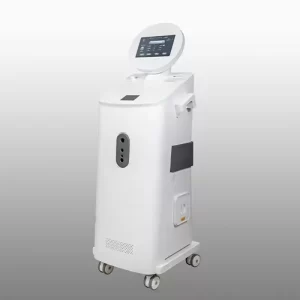As a disinfectant gas, ozone is used more and more widely in various fields, so it is particularly important to understand the corresponding emission concentration standards and specifications.

Changes in China's Occupational Health Standards
In the new standard, the maximum allowable concentration of chemical harmful factors, including ozone, is stipulated, that is, the concentration of chemical harmful factors at any time and in the working place should not exceed 0.3mg/m³ within a working day.
Ozone emission concentration requirements in different fields
With the wide application of ozone in daily life, relevant standards and requirements have been formulated in various fields. Here are some examples:
Air purifiers for household and similar electrical appliances: According to the "Special Requirements for Air Purifiers with Antibacterial, Sterilizing and Purifying Functions for Household and Similar Electrical Appliances" (GB 21551.3-2010), the ozone concentration should be ≤0.10mg at 5cm from the air outlet. /m³.
Medical Ozone Disinfection Cabinet: According to the "Medical Ozone Disinfection Cabinet" (YY 0215-2008), the residual amount of ozone gas should not be greater than 0.16mg/m³.
Tableware disinfection cabinet: According to the "Safety and Hygiene Requirements for Tableware Disinfection Cabinets" (GB 17988-2008), at a distance of 20cm from the cabinet, the ozone concentration should not exceed 0.2mg/m³ every two minutes for 10 minutes.
Ultraviolet air sterilizer: According to the "Safety and Hygiene Standard for Ultraviolet Air Sterilizer" (GB 28235-2011), when someone is present, the maximum allowable ozone concentration in the indoor air environment for one hour when the sterilizer is working is 0.1mg/m³.
Technical Specifications for Disinfection of Medical Institutions: According to the "Technical Specifications for Disinfection of Medical Institutions" (WS/T 367-2012), when people are present, the allowable ozone concentration in indoor air is 0.16mg/m³.

Based on the above standards, it can be seen that the maximum allowable concentration of ozone is 0.16mg/m³ when there are people, and the more stringent requirements require that the ozone concentration does not exceed 0.1mg/m³. It should be noted that different usage environments and scenarios may differ, so corresponding standards and specifications need to be followed in specific applications.
In the field of ozone disinfection, one product that has attracted much attention is the anesthesia breathing circuit sterilizer. This product not only uses ozone disinfection factors, but also combines complex alcohol disinfection factors to achieve better disinfection effects. Here are the features and benefits of this product:

Low ozone emission concentration: The ozone emission concentration of the anesthesia breathing circuit disinfection machine is only 0.003mg/m³, which is far lower than the maximum allowable concentration of 0.16mg/m³. This means that during use, the product ensures the safety of personnel while providing effective disinfection.
Compound disinfection factor: In addition to ozone disinfection factor, the anesthesia breathing circuit sterilizer also uses a complex alcohol disinfection factor. This combination of dual disinfection mechanisms can more comprehensively kill various pathogenic microorganisms inside the anesthesia machine or ventilator, effectively reducing the risk of cross-infection.
High-efficiency performance: The anesthesia breathing circuit sterilizer has high-efficiency disinfection performance and can complete the disinfection process in a short time. This can improve work efficiency, save time, and ensure effective disinfection of the internal circuits of the anesthesia machine and ventilator.
Easy to operate: This product is simple in design and easy to operate. Users only need to follow the instructions to complete the disinfection process. At the same time, the anesthesia breathing circuit disinfection machine is also equipped with corresponding preventive measures to prevent secondary contamination after use.
Summarize
The emission concentration standards of disinfectant gas ozone vary in different fields, and the requirements for people are more stringent. Understanding these standards and requirements can better enable us to further understand the quality requirements and regulations of the environment we live in. When using relevant disinfection equipment, we can ensure the disinfection effect and protect human health.